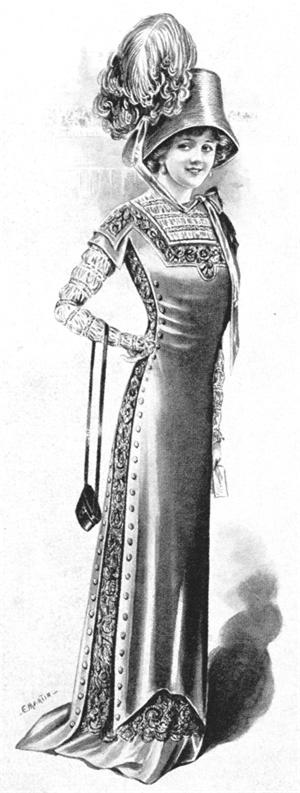 Again we have a puzzle from the Sherlock Holmes puzzle book by Dr. Watson (aka Tim Dedopulos).
Again we have a puzzle from the Sherlock Holmes puzzle book by Dr. Watson (aka Tim Dedopulos).
“On one occasion, Holmes and I were asked to, solve the robbery of a number of dresses from the workshop of a recently deceased ladies’ tailor to the upper echelons of society. Holmes took a short look at the particulars of the case, and sent them all back to the gown-maker’s son with a scribbled note to the effect that it could only be one particular seamstress, with the help of her husband.
However, glancing through my observations some period later, I observed certain facts about the robbery which led me to an interesting little exercise. The stock at the workshop had been very recently valued at the princely sum of £1,800, and when examined after the theft, comprised of precisely 100 completed dresses in a range of styles, but of equal valuation. However, there was no remaining record of how many dresses had been there beforehand. The son did recall his father stating, of the valuation, that if he’d had thirty. dresses more, then a valuation of £1,800 would have meant £3 less per dress.
Are you able to calculate how many dresses were stolen?”
Answer.
See the Fashion Puzzle for solutions.
 This math problem from Colin Hughes’s Maths Challenge website (mathschallenge.net) hearkens back to basic physics.
This math problem from Colin Hughes’s Maths Challenge website (mathschallenge.net) hearkens back to basic physics.
 I have just finished reading a most remarkable book by Alec Wilkinson, called A Divine Language: Learning Algebra, Geometry, and Calculus at the Edge of Old Age. I had read an
I have just finished reading a most remarkable book by Alec Wilkinson, called A Divine Language: Learning Algebra, Geometry, and Calculus at the Edge of Old Age. I had read an  This math problem from Colin Hughes’s Maths Challenge website (mathschallenge.net) is a bit more challenging.
This math problem from Colin Hughes’s Maths Challenge website (mathschallenge.net) is a bit more challenging. Here is a tricky little logarithm problem from the 2021 Math Calendar.
Here is a tricky little logarithm problem from the 2021 Math Calendar. This is another candle burning problem, presented by
This is another candle burning problem, presented by  Here is a challenging problem from the 2021 Math Calendar.
Here is a challenging problem from the 2021 Math Calendar. This problem comes from the “Problems Drive” section of the Eureka magazine published in 1955 by the Archimedeans at Cambridge University, England. (“The problems drive is a competition conducted annually by the Archimedeans. Competitors work in pairs and are allowed five minutes per question ….”)
This problem comes from the “Problems Drive” section of the Eureka magazine published in 1955 by the Archimedeans at Cambridge University, England. (“The problems drive is a competition conducted annually by the Archimedeans. Competitors work in pairs and are allowed five minutes per question ….”) Here is a challenging problem from the Polish Mathematical Olympiads published in 1960.
Here is a challenging problem from the Polish Mathematical Olympiads published in 1960. This problem comes from the Scottish Mathematical Council (SMC) Senior Mathematical Challenge of 2008:
This problem comes from the Scottish Mathematical Council (SMC) Senior Mathematical Challenge of 2008: Again we have a puzzle from the Sherlock Holmes puzzle book by Dr. Watson (aka Tim Dedopulos).
Again we have a puzzle from the Sherlock Holmes puzzle book by Dr. Watson (aka Tim Dedopulos).